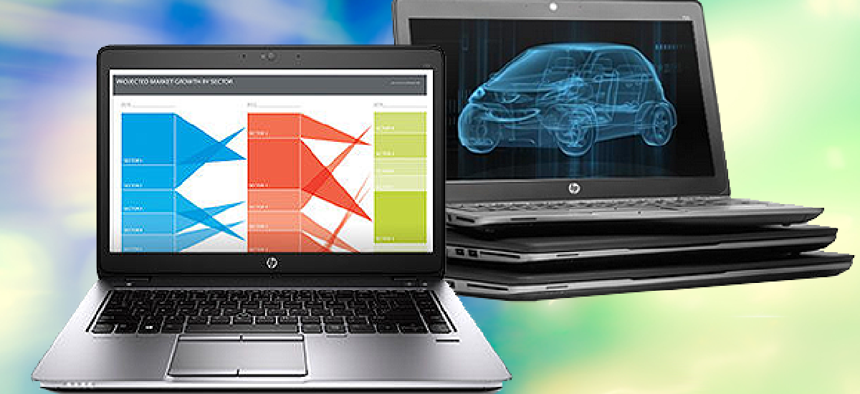HP debuts IT systems fit for public sector demand


Connecting state and local government leaders
HP announced mobile devices and virtual workstation technology the company says meet the demands of its government customers.
HP announced a set of new products this month, including devices for the virtual work enterprise and remote access that the company says meet the demands of its government customers.
“The public sector demands technology that helps employees stay productive across an organization’s different workgroups and field locations,” HP said in its announcement, adding that IT managers must support these new requirements “while meeting security and reliability expectations.”
The new systems include the HP t310 All-in-One zero client and its t520 Flexible Series thin client, designed to help agencies work in virtual environments. The new systems are supported by a an update to HP ThinPro 5.0, HP’s embedded Linux Operating System for thin clients, which features a new interface and more flexibility to move between ThinPro and HP Smart Zero cores.
The HP t310 AiO is built to improve virtual work environments in government organizations where high performance is expected, according to HP. Connected to VMware, the system delivers a remote Windows or cloud experience driven by Teradici PCoIP technology to ensure low display latency and fast response times, HP said.
The HP t520 is a mainstream thin client solution that is 14.4 percent faster than its predecessor the HP t510, HP said. The HP t310 AiO and the HP t520 are expected to start shipping in late June, with worldwide availability over next two months.
HP virtual workstation
The company also announced a virtual workstation that provides secure, remote access to workstation-class applications from devices including thin clients, notebooks and tablets.
The HP DL380z Virtual Workstation is an extension of HP’s family of virtualization solutions designed for engineering, computer-aided design, AEC (architecture, engineering and construction), digital media, oil and gas exploration, education and government.
The new workstation ties together HP’s server technology, NVIDIA virtualization technology and Citrix virtualization technology, HP said, and delivers it via a secure, workstation ecosystem.
The HP DL380z uses the industry-standard 2U form factor, which means it can easily integrate into a customer’s existing data center infrastructure with no additional chassis hardware required.
“Enterprises that are adopting app and desktop virtualization to provide a personalized mobile workspace must address a key user group: design and engineering users,” said Rakesh Narasimhan, group vice president and general manager, desktops and apps, at Citrix.
“Organizations must maintain tight security and control over valuable intellectual property as these users become more mobile and distributed.”
The HP DL380z keeps intellectual property and other sensitive data centralized and secure by transmitting encrypted pixel data over LAN or WAN to remote users. It also allows for flexible IT management with a choice of pass-through GPU and virtual GPU modes that can be configured according to usage needs, making IT change management simple and efficient.
HP mobile offerings
HP also unveiled new mobile devices, including a detachable two-in-one notebook and a series of HP Elite devices suitable for “public sector professionals are constantly on-the-go in some of the toughest work environments,” HP said.
The HP Pro x2 612 functions as both a full notebook and a business tablet that offers security needed for business data, HP said. Customers can choose a sleek, secure standalone tablet, HP Pro Tablet 612, which can be attached to the full-size HP Pro x2 612 Power Keyboard.
The HP Pro x2 612 configuration features a large full high-definition screen, Qualcomm Gobi 4G LTE modem and dual high-definition webcams make sharing and editing content easy.
Meanwhile, the company’s Elite 700 series now includes notebooks and desktops. The series is defined by thin (21mm) designs while the HP EliteDesk 700, offered in three different configurations, gives customers a range of footprint options to fit any environment.
The Desktop Mini, which is smaller than some desk phones, has a clean, easily serviceable design and integrated wireless antenna. It is also available in microtower and small form factor configurations.




